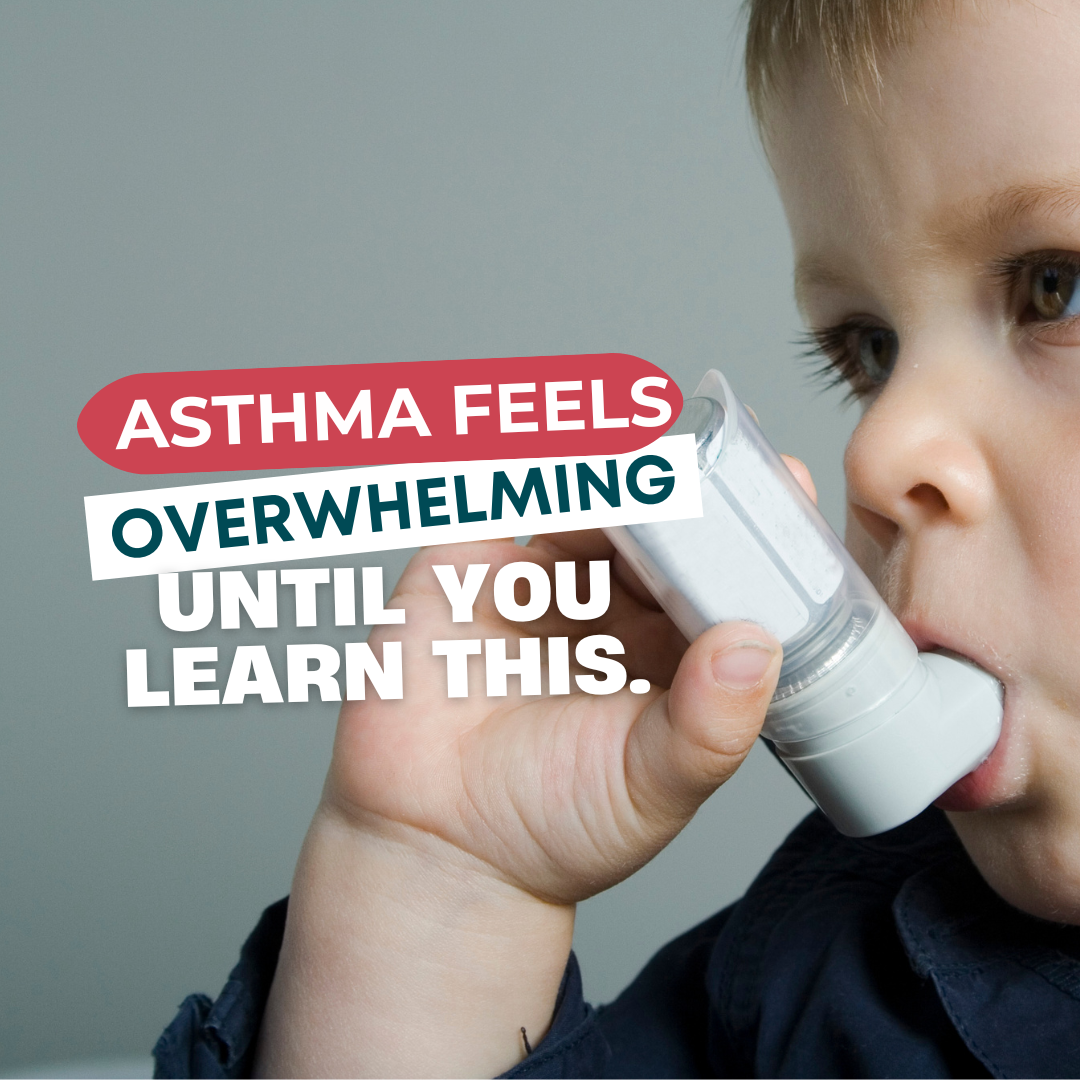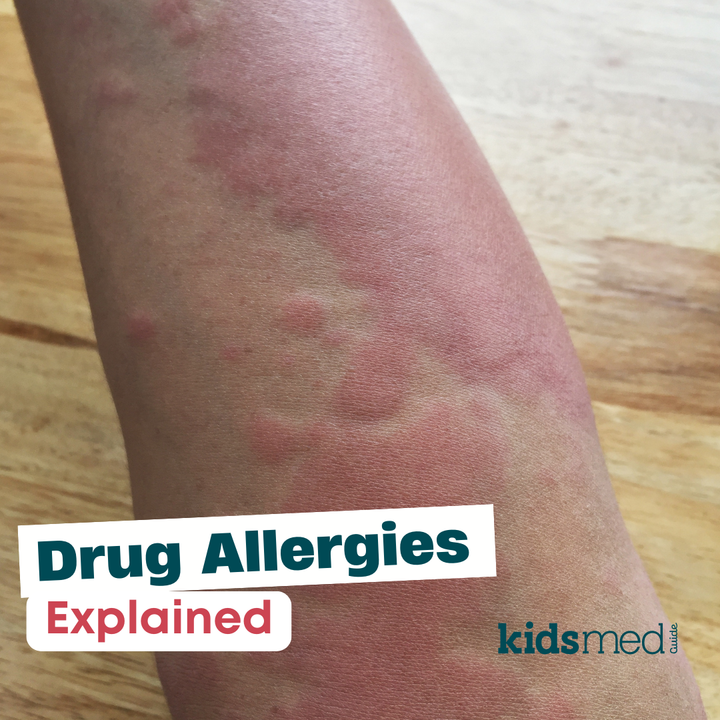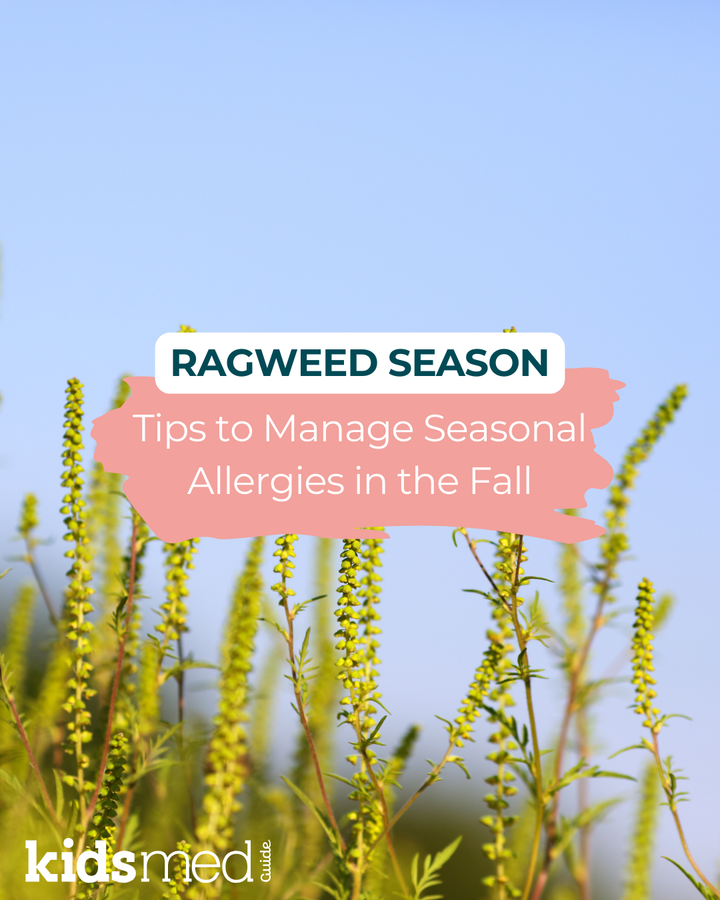Childhood Asthma: Treatment, Triggers, and Daily Management

Asthma diagnoses can be particularly challenging for families. As a parent, it’s difficult to see your child suffer from any disease or illness. However, with asthma, it can be especially frightening because the child struggles to breathe.
To help them breathe, parents must learn a whole new language filled with medical jargon and become familiar with inhalers, nebulizers, and other devices. It’s as if, on top of the anxiety, you also have to become a mini respiratory therapist!
Yup, asthma management can be overwhelming and scary, but with the right tools and knowledge, it becomes a part of daily life rather than a source of fear or significant disruption. If you're navigating this journey, know that you're not alone! Use this guide to learn about asthma management.
Understanding Asthma in Children
Asthma is a chronic condition in which the airways in the lungs become inflamed and narrowed, making it difficult to breathe. Symptoms may include:
- Wheezing: A whistling sound that occurs during breathing.
- Coughing: Particularly at night or in the early morning.
- Shortness of breath: Difficulty breathing at rest and/or while playing or exercising.
- Chest tightness: A sensation of pressure or discomfort in the chest.
These symptoms can vary in both intensity and frequency. Triggers such as allergens, cold air, exercise, or respiratory infections can exacerbate them.
Learn more about common asthma triggers from the American Academy of Pediatrics (AAP): 9 Asthma Triggers and What to do About Them.
Medical Management: Medications and Monitoring
Effective asthma control often involves a combination of medications and regular monitoring. Parents must closely observe their children to understand how they react to triggers or external factors, as well as their response to prescribed medications. Such responses may dictate future asthma treatments.
Quick-relief medications
Also known as rescue inhalers, these medications provide immediate relief during an asthma attack by relaxing the muscles around the airways.
Short-acting beta-agonists (SABAs) like albuterol are the primary treatment for asthma attacks. They act quickly and are often used before physical activity or when symptoms appear.
It’s important to keep these inhalers accessible at all times and teach your child how to use them correctly. Most children will have one for use at home, school, and for activities on the go.
Once developmentally mature enough, kids should feel comfortable using the inhaler themselves in case of an emergency. Practice with your child to give them confidence and autonomy.
Long-term control medications
These medications help prevent asthma symptoms and reduce airway inflammation, leading to better long-term control and, ideally, fewer flare-ups. Long-term controller inhalers or oral medications are taken every day, regardless of how the patient is feeling that day.
- Inhaled corticosteroids (ICS): Considered the most effective long-term control medication for children. They reduce inflammation and prevent symptoms, and they have also been extensively studied in kids.
- Leukotriene modifiers: Oral medications that help control asthma symptoms. They may or may not be added to your child’s regimen, depending on their response to typical inhalation controller medications. Children with allergies may be more likely to need a leukotriene modifier.
- Combination inhalers: Contain both a corticosteroid and a long-acting beta-agonist (LABA) for more severe cases. Some children with persistent asthma may need multiple medicines to keep their asthma under control.
Children with severe or persistent asthma may require additional therapies or medications beyond those listed here.
Choosing the correct asthma medication
According to the National Heart, Lung, and Blood Institute (NHLBI), the choice of medication depends on the severity and frequency of your child's symptoms. Your child's age and developmental stage also play a role.
Regular follow-ups with your child's healthcare provider are crucial to adjust medications as needed. Providers will assess your child’s asthma severity and how symptoms respond to treatment. Doctors follow a stepwise approach to escalating or de-escalating drug therapy.
It's also important to visit your child's pediatrician regularly to ensure that other conditions, such as reflux or allergies, are appropriately managed. Overall health is important for asthma control. The goal is to achieve good asthma control with the appropriate amount of medication while prioritizing patient safety!
Proper inhaler technique
Getting the proper medication is important, but it's equally important that you and your child understand how to administer the medicine. To work correctly, medicine in inhalers needs to reach the lungs.
Asthma medications come in a variety of inhalers and nebulizers. Inhalers are devices that deliver a dose of medication directly into the mouth, where the patient then inhales it into their lungs with a breath in. Nebulizers refer to liquid medication that is turned into inhaled mist via a nebulizer machine.
Each product is slightly different and may have different instructions. It's very important that you read the package insert carefully and consult with your pediatrician, nurse, or pharmacist for assistance. Practice administering the medicine in front of your healthcare provider and ask any questions you may have.
Check out our KidsMedGuide post for an in-depth understanding of inhalers, including explanations of spacers and nebulizers.
Asthma Action Plan
Just as important as receiving proper treatment is having an asthma action plan —a personalized roadmap for managing daily symptoms and flare-ups.
Check out our KidsMedGuide article that explains all about Asthma Action Plans.
An asthma action plan is a guide developed with your child's doctor. It is intended to serve as a reference for home use, helping families track and manage asthma symptoms. See an example of an asthma action plan here: American Academy of Pediatrics (AAP) Asthma Action Plan.
Asthma action plans usually contain “zones,” enabling you to monitor your child’s symptoms and treat them appropriately based on which zone they are in.
An asthma action plan outlines:
- Daily management: Medications and dosages for daily use. Instructions may vary depending on which zone your child is in.
- Flare-ups: Instructions on managing worsening symptoms.
- Emergency care: When to seek immediate medical attention.
Having this plan ensures everyone involved in your child's care—family members, teachers, school nurses, and caregivers—knows how to respond appropriately.
Non-Medication Strategies: Lifestyle and Environmental Control
Beyond medications, several strategies can help manage asthma symptoms. Non-medication strategies are just as important as medications when it comes to living a healthy and active lifestyle!
Identify and avoid triggers
Pay attention to what makes your child’s asthma symptoms worse. Keep a log or diary, especially if this is a new diagnosis for your family.
Common asthma triggers include:
- Allergens: Such as pollen, dust mites, mold, and pet dander
- Irritants: Like tobacco smoke, fumes, strong odors, and air pollution
- Weather conditions: Cold air or sudden temperature changes
- Exercise: Especially in cold or dry air
By identifying your child's specific triggers, you can take steps to minimize exposure.
Maintain a healthy environment
- Air quality: Use air purifiers and keep windows shut on days with high pollen levels. Monitor air quality reports, as they may inform you about conditions that could trigger symptoms, such as elevated pollen counts, wildfire smoke, or other unforeseen factors.
- Cleanliness: Regularly clean bedding, carpets, and curtains to minimize the presence of dust mites. If possible, remove carpets and plush toys from bedrooms or areas where children spend a significant amount of time, such as a playroom.
- No smoking: Ensure that your home and car are smoke-free zones. Avoid second-hand smoke for children at all costs; it’s a significant asthma trigger!
Encourage safe physical activity
While exercise can be a trigger, regular physical activity strengthens the lungs and improves overall health. With proper management and, if necessary, pre-exercise medication, most children with asthma can participate in sports and play. Don’t forget your inhalers! Additionally, ensure that the coach or adult supervising your child is aware of their diagnosis.
Breathing techniques and relaxation
Techniques such as diaphragmatic breathing and guided imagery can help your child manage stress and regulate breathing patterns. Some families find practices like yoga beneficial, but it is always advisable to consult your child's doctor before starting new activities.
Partnering with Schools and Caregivers
Make sure your child's school is aware of their asthma condition. Provide the school nurse and teachers with the following:
- A copy of the asthma action plan.
- Necessary medications: If your child has a scheduled controller medication dose during the day, ensure that the nurse has the product on hand and knows how to administer it (some inhalers can be complex to use). All children with asthma should have access to their rescue inhaler while at school or during sports.
- Instructions: On how to handle asthma symptoms or attacks.
Regular communication with caregivers and educators ensures a supportive environment for your child. Mama bears always have their kids' best interests at heart. When it comes to managing asthma, you must confidently advocate for your child and teach them how to advocate for themselves, too.
Regular Monitoring and Check-Ups
Asthma is a dynamic condition; symptoms and triggers can change over time. What worked today may not work tomorrow! Regular medical appointments allow for:
- Assessment of asthma control
- Adjustment of medications
- Review of inhaler techniques
- Updating the asthma action plan
Keeping a symptom diary can also help track patterns and identify potential triggers.
There are many different asthma medications available on the market. If your child’s asthma is not well-controlled, you can work with your pediatrician to find a different inhaler, nebulizer, or device that may work better for your child.
Asthma is a condition that is managed together. It takes a whole team – patients, parents, providers, nurses, caregivers, and perhaps specialized providers like pulmonologists or respiratory therapists.
Conclusion
Managing your child's asthma involves a combination of medical treatments and lifestyle adjustments.
As a parent, you are your child’s fiercest advocate and know them best. Teach them to manage their asthma confidently and emphasize the importance of following their asthma action plan and taking their medications as prescribed.
With knowledge, preparation, and support, you can help your child lead a healthy, active life. You’ve got this!
FAQ: Childhood Asthma
Q: Can my child with asthma play sports?
A: Yes! With proper control and pre-exercise medications, most children with asthma can enjoy sports and physical activities.
Q: What is an asthma action plan and why is it important?
A: It’s a personalized plan that helps guide daily asthma care and how to handle worsening symptoms. It keeps everyone on the same page—from parents to teachers.
Q: What’s the difference between controller and rescue inhalers?
A: Controller inhalers (like ICS) are used daily to prevent symptoms. Rescue inhalers (like albuterol) are used to quickly relieve symptoms during an asthma attack.
The following references were used to compile this information:
9 Asthma Triggers and What to do About Them. (2020, January 21). HealthyChildren.Org. https://www.healthychildren.org/English/health-issues/conditions/allergies-asthma/Pages/asthma-triggers-and-what-to-do-about-them.aspx
Asthma Action Plan. (2021). https://publications.aap.org/pediatriccare/resources/17509/Asthma-Action-Plan
Cloutier, M. M., Teach, S. J., Lemanske, R. F., Jr, & Blake, K. V. (2021). The 2020 Focused Updates to the NIH Asthma Management Guidelines: Key Points for Pediatricians. Pediatrics, 147(6), e2021050286. https://doi.org/10.1542/peds.2021-050286
What Is Asthma? (2020, January 21). HealthyChildren.Org. https://www.healthychildren.org/English/health-issues/conditions/allergies-asthma/Pages/What-is-Asthma.aspx?_gl=1*1q3xdhw*_ga*OTM2NTE5MDg4LjE3NDcxNTk3Mjg.*_ga_FD9D3XZVQQ*czE3NDcxNTk3MjckbzEkZzEkdDE3NDcxNTk3ODAkajAkbDAkaDA.



